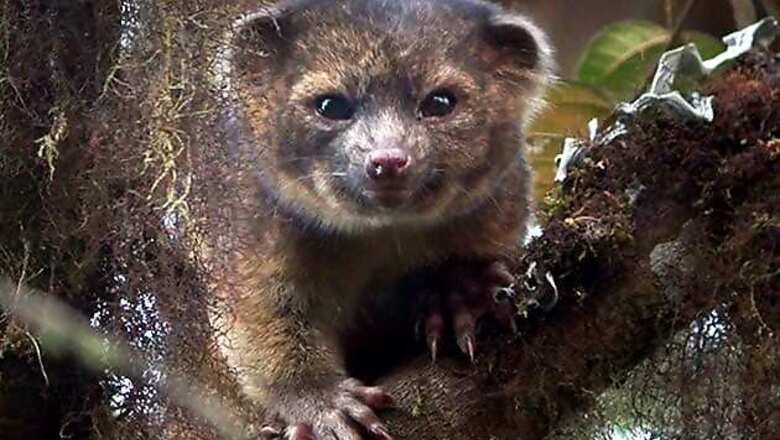
views
New Delhi: From the approximately 18,000 new species named during the previous year, an international committee of taxonomists and related experts selected the top 10 that includes an appealing carnivorous mammal, a 12-metre-tall tree that has been hiding in plain sight and a sea anemone that lives under an Antarctic glacier.
The list was released on May 22 on the eve of Carolus Linnaeus's birthday (May 23), an 18th century Swedish botanist who is considered the father of modern taxonomy. The annual list is put together by the International Institute for Species Exploration.
The list of the top 10 species is not ranked, and is presented in alphabetical order by scientific name:
Olinguito (Bassaricyon neblina)

The appealing olinguito, resembling a cross between a slinky cat and a wide-eyed teddy bear, lives secretively in cloud forests of the Andes mountains in Colombia and Ecuador (Photo: Mark Gurney / CC BY 3.0)
Kaweesak's Dragon Tree (Dracaena kaweesakii)

Sounding like something out of Game of Thrones and standing 12 metres (nearly 40 feet) tall, it's hard to believe the dragon tree went unnoticed this long. The dragon tree is found in the limestone mountains of the Loei and Lop Buri Provinces in Thailand and may also be found in nearby Burma. (Photo: Paul Wilkin)
ANDRILL Anemone (Edwardsiella andrillae)

A species of sea anemone, living under a glacier on the Ross Ice Shelf in Antarctica, raises questions by its very existence. It is not clear how the species withstands the harsh conditions in its habitat. (Image: SCINI)
Skeleton Shrimp (Liropus minusculus)

This tiny shrimp, the smallest in the genus, was identified from among specimens originally collected from a cave on that island of romance, sunny Santa Catalina, off the coast of Southern California. (Photo: SINC and JM Guerra-García)
Orange Penicillium (Penicillium vanoranjei)

Distinguished by the bright orange colour it displays when produced in colonies, this fungus was named as a tribute to the Dutch royal family. (Photo: Cobus M Visagie and Jan Dijksterhuis)
Leaf-tailed Gecko (Saltuarius eximius)

It's not easy to spot this gecko, which has an extremely wide tail that is employed as part of its camouflage. (Photo: Conrad Hoskin)
Amoeboid Protist (Spiculosiphon oceana)

This one-celled organism is four to five centimeters high (1.5 to two inches), making it a giant in the world of single-celled creatures. (Photo: Manuel Maldonado)
Clean Room Microbes (Tersicoccus phoenicis)

Found in rooms where spacecraft are assembled, this microbial species could potentially contaminate other planets that the spacecraft visit. (Photo: Tersicoccus DSM)
Tinkerbell Fairyfly (Tinkerbella nana)

The tiny size and delicately fringed wings of the parasitoid wasp family Mymaridae led to their common name: fairyflies. (Photo: Jennifer Read)
Domed Land Snail (Zospeum tholussum)

Living in complete darkness some 900-plus metres (nearly 3,000 feet) below the surface in the Lukina Jama-Trojama caves of western Croatia is Zospeum tholussum. This land snail lacks eyes as they're not necessary in the total darkness of the caves, and it has no shell pigmentation giving it a ghost-like appearance. (Photo: Jana Bedek)
















Comments
0 comment